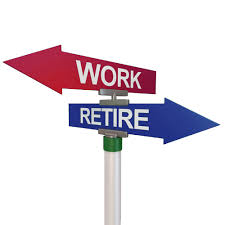How well is your business future-proofed for the wellbeing of your workforce? (posted on 08.02.2017)
As society evolves and working environments continually change, new, and sometimes unforeseen, challenges to working practices develop. Demographic change and globalisation are two noteworthy drivers which are contributing to the changing workplace, and the ability of businesses to identify the workplace health and wellbeing risks associated with these are essential to future-proofing the wellbeing of your workforce.
Some of the key challenges associated with these two drivers include an ageing workforce, unrealistic deadlines, an increase in shift-work (particularly night shift), poor social support, and being connected 24/7 to technology. Let’s take the advancement of information and communication technology (ICT) for example. This could be considered favourably as it has allowed employees to enjoy a more flexible way of working and better blended work-lifeintegration. On the other hand, the growing use of ICT is seen by experts as a major contributing factor to a lack of physical activity, extended periods of fixed body postures, and the inability to ‘switch-off’. The health consequences of these risks are considerable, contributing to an increase in musculoskeletal disorders, a rise in obesity levels, links to certain types of cancers, diabetes type 2 and cardiovascular disease, and an increase in mental health issues and burnout. Left unchecked, the long-term implications on the health of your workforce could be significant.
Demographics are also changing, in part due to an ageing population. Between 2010 and 2030 in the European Union (EU) alone, the number of workers aged between 55-64 years old is expected to increase by around 16%. Whilst this brings the benefit of extensive skills, knowledge and management experience, the research also demonstrates there are inherent risks. The risks identified include the inability to undertake certain functions of a physical nature, increased exposure to poor working conditions, lack of opportunity for learning and development, and a greater natural propensity towards age related illnesses. Through identifying these risks, organisations have the opportunity to strategically respond to the changing needs and expectations of this population, whether it is focusing on management attitudes, improved healthcare, or the working environment.
The numbers surrounding the significance of the impact of poor health and wellbeing of the workforce on both the economy and businesses are now well documented (see our previous blog). So how does being proactive around the health and wellbeing of your employees impact your business? Aside from the obvious, e.g. improved productivity, reduced absenteeism, talent attraction, and improved employee engagement, research also demonstrates that British workers are more likely to remain in a place of work that cares for their wellbeing and seeks to maximise their energy levels through health and wellbeing initiatives – both at an organisational level as well as an individual one. Essentially, employees are starting to prioritise personal fulfilment and wellbeing, including building in mental recovery at work, over better pay packages.
How well is your organisation future-proofed towards the health and wellbeing of your workforce? A commitment towards the health, wellbeing and fitness of your employees makes good business sense both short-term and long-term. If you’d like to find out more about how SkyRocket Wellness can help your business plan for a healthier future, we’d love to hear from you!
References:
European Agency for Safety and Health at Work (2005). Expert forecast on emerging physical risks related to occupational safety and health.
European Agency for Safety and Health at Work (2013). Priorities for occupational safety and health research in Europe: 2013-2020.
Griffiths, A. (1997). Ageing, health and productivity: A challenge for the new millennium. Work&Stress, 11(3), 197–214.
Health and Safety Executive (2007). HSE futures scenario building: The future of health and safety in 2017.
Unum (2014). The future workplace. Key trends that will affect employee wellbeing and how to prepare for them today.

Follow Us...